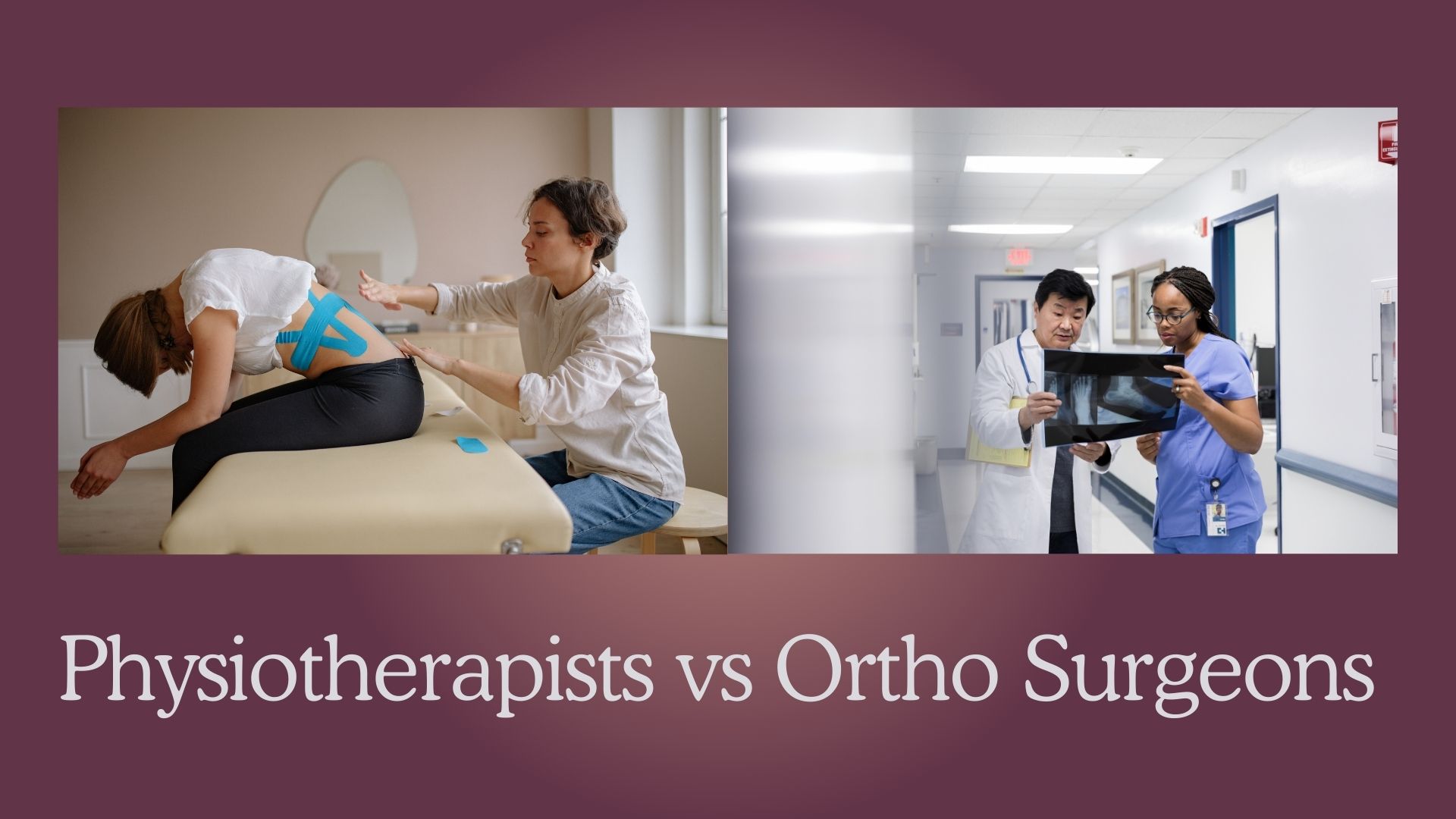Laurie's Blogs.
Jun 2024
Understanding the Distinct Approaches of Physical Therapists and Orthopedic Surgeons in Patient Assessment

When it comes to musculoskeletal issues, both physical therapists (PTs) and orthopedic surgeons play crucial roles in diagnosing and treating patients. However, their approaches to patient assessment and treatment planning differ significantly. These differences stem from their unique training, perspectives on patient care, and ultimate treatment goals. This blog comes as a result of a conversation with a veterinary regulator. Here, I’ll highlight how physical therapists and orthopedic surgeons assess patients differently, focusing on their distinct thought processes, holistic body evaluations, and functional evaluations.
DIFFERENCES IN THINKING
Orthopedic surgeons and physical therapists approach patient assessment with different mindsets, shaped by their respective training and areas of expertise.
Orthopedic Surgeons:
Medical and Surgical Focus: Orthopedic surgeons are trained primarily in diagnosing and treating musculoskeletal conditions through medical and surgical interventions. Their thought process often emphasizes identifying structural abnormalities, such as fractures, torn ligaments, or degenerative changes, and determining the best surgical or pharmacological interventions to correct these issues.
Diagnostic Imaging: Surgeons heavily rely on diagnostic imaging tools like X-rays, MRIs, and CT scans to get a clear picture of the structural problems within the body. These tools help them decide whether a surgical procedure is necessary and, if so, what type of surgery would be most effective.
Immediate Problem Resolution: The primary goal for orthopedic surgeons is often the immediate resolution of the identified problem, whether through surgery or other medical treatments. They focus on the specific area of concern, aiming for a quick and effective intervention.
Physical Therapists:
Functional and Holistic Approach: Physical therapists, on the other hand, adopt a more holistic and functional approach to patient assessment. Their training emphasizes understanding the body as an interconnected system and how various factors, including biomechanics, muscle strength, flexibility, and patient lifestyle, contribute to the overall health and function of the musculoskeletal system.
Movement Analysis: PTs focus extensively on movement analysis. They assess how patients move, identify dysfunctional movement patterns, and determine how these patterns contribute to pain or injury. This functional perspective is crucial in developing comprehensive, non-invasive treatment plans.
Long-Term Health: The goal for physical therapists is often long-term health and functionality. They aim to address not only the immediate symptoms but also the underlying causes of dysfunction, promoting sustainable improvements in patient health and preventing future issues.
WHOLE BODY EVALUATION
The scope of patient evaluation also varies significantly between orthopedic surgeons and physical therapists.
Orthopedic Surgeons:
Targeted Assessment: Orthopedic surgeons typically perform targeted assessments focused on the specific area of complaint. For example, if a patient presents with knee pain, the surgeon will concentrate on examining the knee joint, looking for signs of injury or degeneration, and correlating these findings with imaging results.
Localized Approach: This localized approach is efficient for diagnosing conditions that may require surgical intervention, but it may overlook contributing factors elsewhere in the body that might be exacerbating the issue.
Physical Therapists:
Comprehensive Evaluation: Physical therapists conduct comprehensive evaluations that consider the entire body. They understand that pain or dysfunction in one area can often stem from issues in another part of the body. For example, knee pain might be linked to hip weakness, ankle instability, or improper gait mechanics.
Postural and Biomechanical Assessments: PTs perform detailed postural and biomechanical assessments to identify imbalances or weaknesses that contribute to the patient's condition. They evaluate muscle strength, joint range of motion, coordination, and balance as part of their assessment.
Patient Lifestyle and Environment: PTs also consider the patient's lifestyle, occupation, and daily activities. These factors are crucial in understanding the root causes of musculoskeletal issues and developing personalized treatment plans.
EVALUATION OF FUNCTION
Functional evaluation is where physical therapists particularly excel, as their approach encompasses a broader spectrum of patient health and wellness.
Orthopedic Surgeons:
Structural Integrity: Surgeons evaluate function primarily in terms of structural integrity and the ability to perform specific movements or activities without pain. Their functional assessments might involve tests that provoke symptoms to pinpoint the problem area.
Surgical Outcomes: The focus is often on determining whether surgery can restore function by correcting structural issues. Post-surgery, their evaluations might include assessing the success of the surgical intervention and ensuring proper healing.
Physical Therapists:
Functional Performance: PTs assess functional performance in a more detailed and dynamic manner. They look at how patients perform everyday activities, sports, or work-related tasks. Their evaluations often include functional tests that mimic real-life activities to identify limitations or compensations.
Patient-Specific Goals: Treatment plans are tailored to the patient's specific goals, whether that’s returning to a sport, performing job duties without pain, or simply being able to carry out daily activities more efficiently. PTs use functional assessments to set measurable goals and track progress over time.
Prevention and Education: PTs emphasize patient education and prevention strategies. They teach patients how to move correctly, strengthen weak areas, and maintain a healthy lifestyle to prevent future injuries.
CONCLUSION
Both orthopedic surgeons and physical therapists play vital roles in the healthcare system, each bringing a unique perspective to patient assessment and treatment. While orthopedic surgeons focus on diagnosing and correcting structural problems through medical and surgical interventions, physical therapists adopt a holistic, functional approach aimed at improving overall movement and preventing future issues. Understanding these differences helps patients make informed choices about their care and highlights the complementary nature of these two professions in promoting musculoskeletal health. Both professions are necessary in human AND animal health care.


